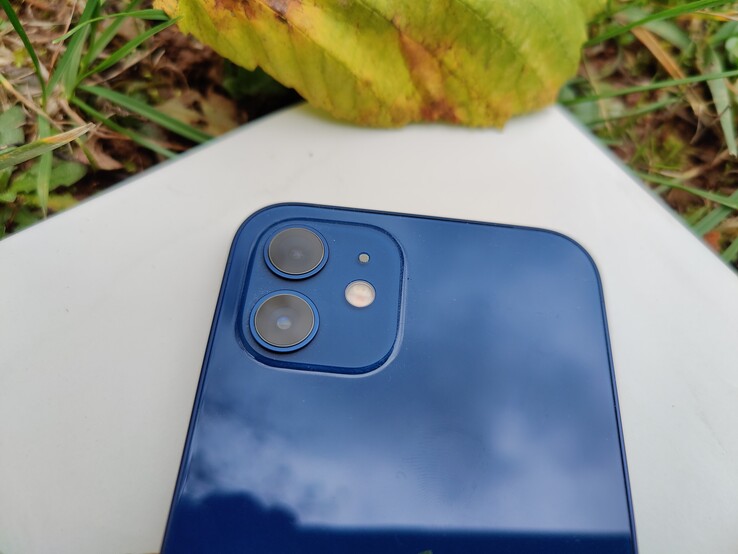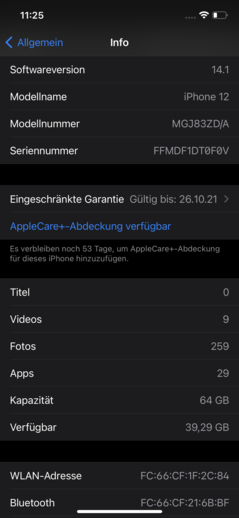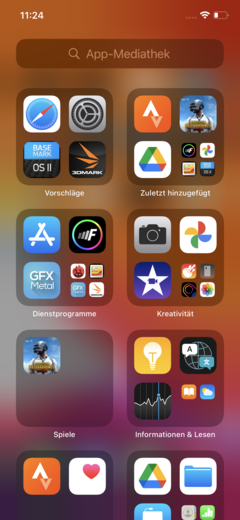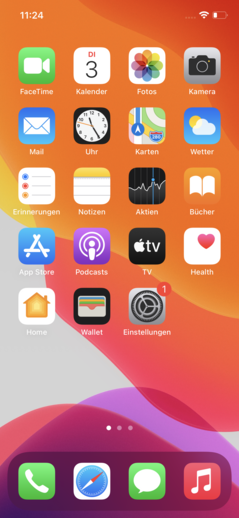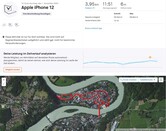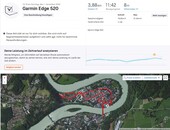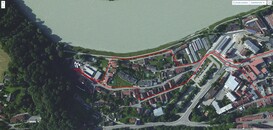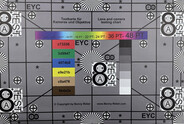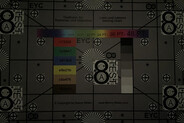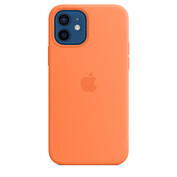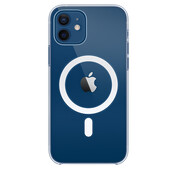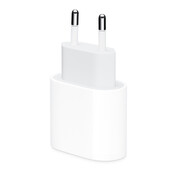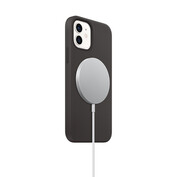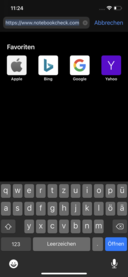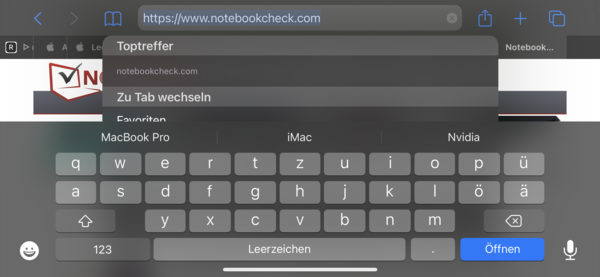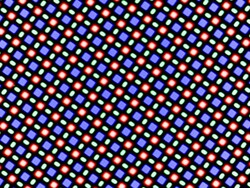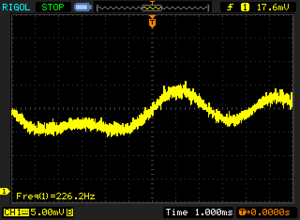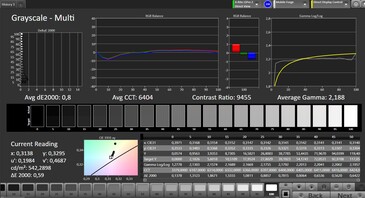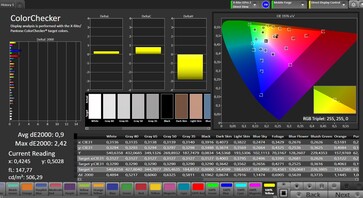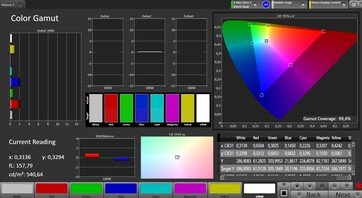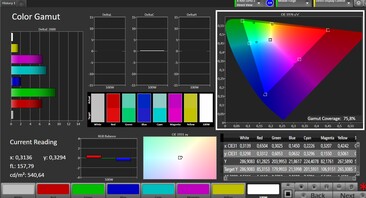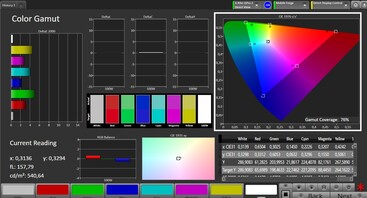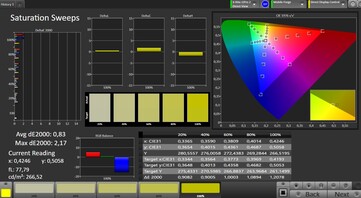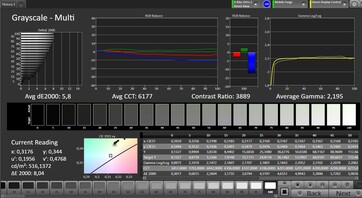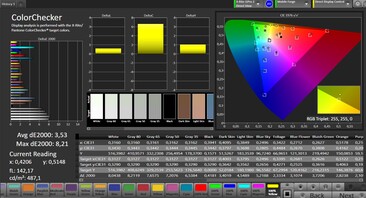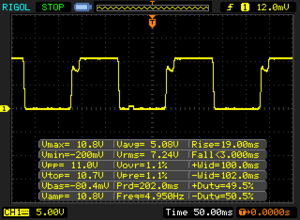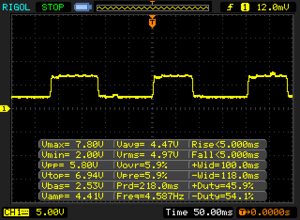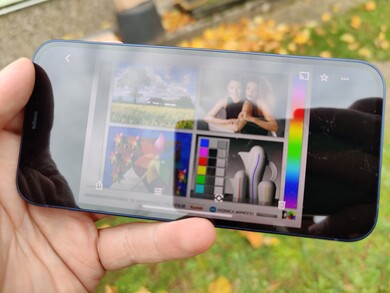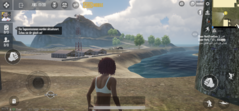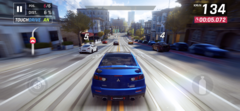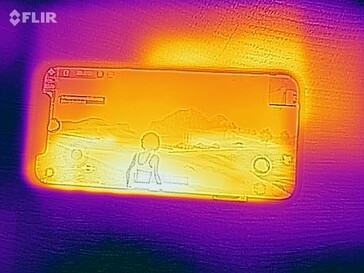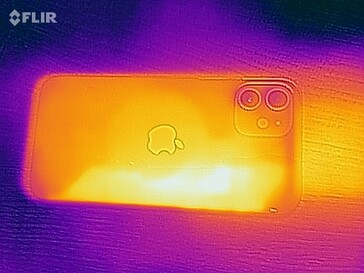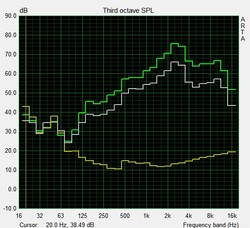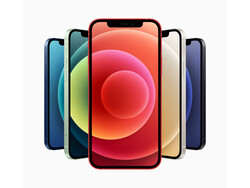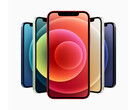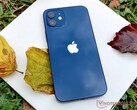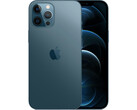Apple iPhone 12 Smartphone Review - Apple phone with 5G
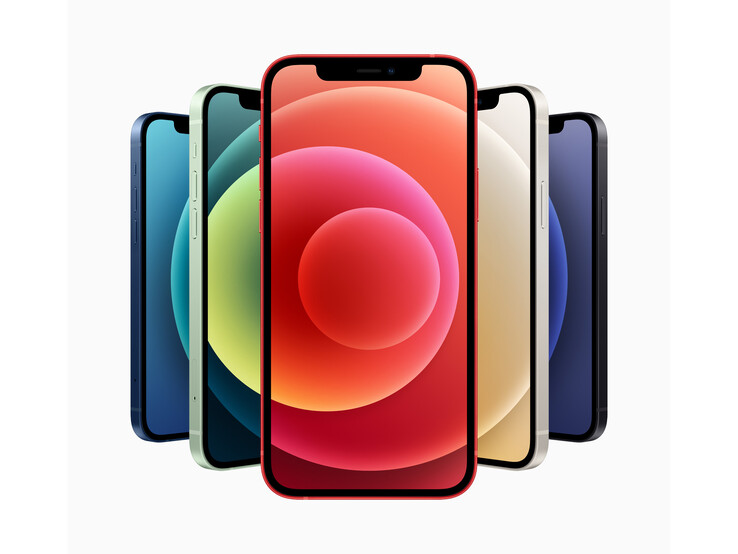
Even 13 years after their first smartphone was revealed, Apple still manages to make the launch of their new iPhone generation very exciting. In 2020, Apple launched four different iPhone models. The two more expensive models are the Pro and Pro Max while the more affordable options are the smaller iPhone 12 mini and the iPhone 12. The latter is what we will be looking at in today's review.
The new model has a number of innovations to offer. For example, it now features an OLED display instead of the usual IPS screen and also supports 5G for the first time. Apple seems to have gone back to its roots in terms of design. Let's take a closer look!
Comparison devices
Rating | Date | Model | Weight | Drive | Size | Resolution | Best Price |
|---|---|---|---|---|---|---|---|
| 88.2 % | 11/2020 | Apple iPhone 12 A14, A14 Bionic GPU | 162 g | 64 GB SSD | 6.10" | 2532x1170 | |
| 86.5 % | 09/2019 | Apple iPhone 11 A13 Bionic, A13 Bionic GPU | 194 g | 64 GB SSD | 6.10" | 1792x828 | |
| 87 % | 10/2020 | Asus Zenfone 7 Pro ZS671KS SD 865+ (Plus), Adreno 650 | 235 g | 256 GB UFS 3.1 Flash | 6.67" | 2400x1080 | |
| 89.4 % | 04/2020 | Huawei P40 Pro Kirin 990 5G, Mali-G76 MP16 | 209 g | 256 GB UFS 3.0 Flash | 6.58" | 2640x1200 | |
| 87.8 % | 10/2020 | OnePlus 8T SD 865, Adreno 650 | 188 g | 128 GB UFS 3.1 Flash | 6.55" | 2400x1080 | |
| 88.1 % | 10/2020 | Samsung Galaxy Note20 Exynos 990, Mali-G77 MP11 | 192 g | 256 GB UFS 3.1 Flash | 6.70" | 2400x1080 |
Case - Smart retro look
Traditionalists will be pleased. The shape of the new iPhone 12 is strongly reminiscent of early iPhones with rounded corners and clear-cut edges. After having experimented with more rounded sides in the last generation, this change is quite a statement. Whether you like it or not will depend on your personal preference. We are very pleased with the new old design. As usual, the iPhone is available in a range of colors: white, black, blue, green and product red.
The workmanship and stability of the case leave nothing to be desired. Apple has created a new type of ceramic glass, which the manufacturer has named "ceramic shield". It is supposed to better protect the front of the phone compared to its predecessors. Initial drop tests on the internet seem to confirm that the iPhone 12 is fairly robust while the larger variants, also equipped with the ceramic shield, are more sensitive. iFixit has pointed out, however, that the back glass can break as well, which would then require the entire case to be replaced anyway.
The frame is once again made of aluminum and the hardware buttons are fitted very precisely. Apple has also made quite extensive claims in terms of the environmental friendliness of their products and says that they now use a lot of recycled materials, for example when it comes to rare earth elements or tin for soldering. Some components are made up of up to 35 percent recycled plastics as well. You can read up on Apple's detailed environmental report on the product here.
The case is protected from water and dust according to IP68.
Connectivity - Expensive and with limited storage
All iPhone 12 devices are equipped with 4 GB of RAM, which wouldn't be a lot for an Android phone but seems to be enough for Apple's iOS. Buyers can choose the size of their storage, which cannot be expanded by microSD:
- iPhone 12 64 GB: $830
- iPhone 12 128 GB: $880
- iPhone 12 256 GB: $980
This makes the iPhone 12 quite a bit more expensive than its predecessor.
The new MagSafe connector is quite interesting. It's a magnet on the back of the iPhone that can be used to connect a range of accessories as well as to recharge the iPhone. If you were hoping for a switch to USB-C, you will be disappointed. The iPhone has a lightning connector again. At least this means that any accessories users may have from old iPhones will continue to work with the iPhone 12.
Although the phone only has one SIM slot, the device also supports an eSIM, which means you can still use two networks simultaneously on this smartphone.
Software - Updates for years to come
Of course, iOS 14 also has several new features. For example, the new app library automatically sorts all available apps into suitable groups. Calls no longer take up the entire display. The corona pandemic has inspired new memojis with masks and Apple maps now lets you plan special routes for electric cars that include charging stations along the way. A new translator app makes it easy to communicate with people in other languages. The wallet now also lets you store virtual car keys, so that you can open your car with your iPhone. This feature even works when the battery is flat.
Apple has also rethought some aspects of their data protection features. For example, you can see whether the camera or a microphone is in use via a symbol on the display and can choose to only pass on your approximate location in weather apps, for example.
The iPhone 12 should be well-equipped for the coming years in terms of software updates. iOS14 even works with the iPhone 6S, which was first released 5 years ago.
Communcation and GPS - Fast, but not the fastest
The 2020 iPhone generation is the first to support 5G. Apple has chosen to cover a number of 5G and LTE frequencies, which means that the smartphone can be used to access mobile internet in a lot of countries. The iPhone works at gigabit speeds in the LTE network - but that is all Apple will tell us. But 4x4 MIMO can support very fast connections in general.
iPhones sold in Europe do not support 5G mmWave, which means that you can't use ultrafast 5G networks with a small range. This function is only available for iPhones purchased in the US.
The phone also supports fast WiFi 6 with MIMO 2x2. The iPhone 12 is faster than its predecessor according to our test results, although it only really impresses when sending data leaving most Android competitors behind. The reception rates fluctuate a lot; the average we measured is 566 MBit/s. That still is quite a good value, but Android smartphones generally achieve even higher rates.
So while the iPhone 12 certainly isn't a slow smartphone when it comes to WiFi connection, it isn't the fastest device on the market either.
The iPhone 12 is a reliable navigator: Our practical test, a bike ride on which we took the Garmin Edge 520 along as a comparison device, revealed that the iPhone 12 was very precise with only minimal occasional deviations. Nothing major. This means that we can definitely recommend the 2020 iPhone as a navigation system.
Telephony and Call Quality - Good microphone in the iPhone 12
Apple's telephony app is clear and easy to use. VoWiFi and VoLTE have been in use for many iPhone generations.
Our evaluation of sound quality when telephoning with the iPhone 12 is divided. While we were fairly pleased with the microphone, which transmits our voice clearly, even when you speak quietly, the earpiece didn't do a particularly good job at transmitting our call partner's voice, which sounds distant, thin and slightly droning. The sound is better on speakerphone but still can't quite compare with other smartphones.
Cameras - Two lenses are enough
The iPhone 12 keeps its simple: You only have to remember one MP number as this remains the same for the main lens, the wide-angle camera and the front camera. All three lenses offer 12 megapixels. This means that not much has changed since last year's iPhone. Only the main camera's light intensity has improved from f/1.8 to f/1.6.
Further differences to predecessors can be found in terms of software: For example, we now have an improved night mode that also works for the wide-angle and front lens and enables you to record traces of light on video. Videos can also be recoded in the improved HDR mode Dolby Vision - in 4K and 60 fps.
The fact that there are only two lenses might appear to be a disadvantage compared to other high-end smartphones. Often, however, these additional lenses have very low resolutions and only have a supporting function, which is why we wouldn't consider this aspect to be a real limitation.
The 12-MP resolution also seems to be lower than on other smartphones but is entirely sufficient as long as you aren't planning to blow photos up for an enormous wall poster. Plus, other smartphones often cheat: While they might offer 64 or more MP, they then combine several pixels to one to increase light intensity, effectively reaching 16 MP. Still, the iPhone 12 isn't quite as flexible as other phones that are at least capable of taking higher resolution photos.
Let's take a look at the iPhone's image quality itself. We were very pleased with the photos taken in normal daylight with structures being displayed nicely and both bright and dark areas offering high details and good sharpness.
Videos can be recorded at a maximum resolution of 4K and 60 fps. We were pleased by the stabilization and the sharpness of the recorded videos.
The front camera also creates decent images and manages to display fine details.
A few words on Apple's camera app: The automatic mode often takes very good photos and videos, but settings are limited. If you would rather have a stronger influence on image quality, you can download a range of professional camera apps.
Image Comparison
Choose a scene and navigate within the first image. One click changes the position on touchscreens. One click on the zoomed-in image opens the original in a new window. The first image shows the scaled photograph of the test device.
Hauptobjektiv BlumeHauptobjektiv UmgebungHauptobjektiv Low LightUltraweitwinkelWe also tested the iPhone 12's camera under controlled lighting in our lab. There was hardly anything to criticize in even, bright lighting. The test image has high details and good contrasts and remains sharp in the corners and at the edges. The subject is still recognizable in low lighting, but there is a certain unavoidable amount of image noise.
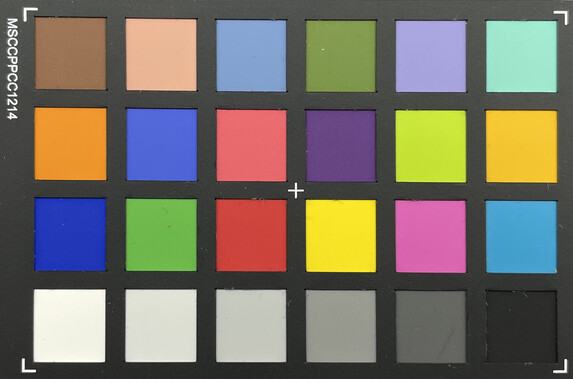
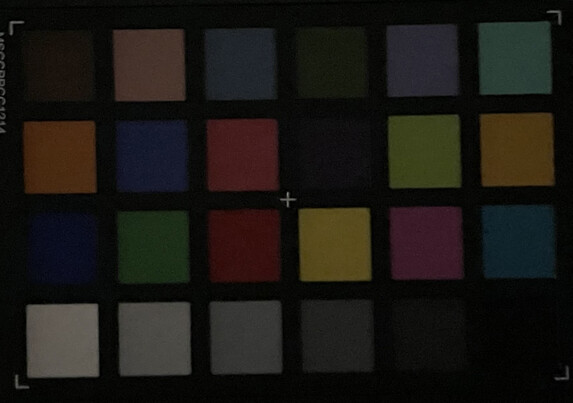
Accessories and Warranty - MagSafe on the new iPhone
There's a lot to say about the iPhone 12 when it comes to accessories. Apple has decided to no longer include a charger and headset. Buyers who would need these accessories will have to buy them separately. Apple claims that this is due to environmental concerns, because most customers already have a charger at home anyway. The missing accessories also mean that Apple can make the box smaller, reducing CO2 emissions during transport.
That makes sense, particularly as Apple tended to include weaker chargers than what the iPhone could actually handle. If users wanted to quick charge a device, they had to purchase an additional charger anyway. The price, however, doesn't reflect these missing accessories, but has actually increased. Make of that what you will.
So the smartphone comes equipped only with a USB C to lightning cable and a SIM tool to open the SIM drawer.
Apple themselves prefer to talk about a less controversial subject - the new MagSafe connector. The manufacturer has installed a magnet on the back of the iPhone that automatically connects to compatible accessories. For example, there's a special wallet for credit cards (the credit cards are protected from the magnet, of course). Apple charges $60 for the wallets, $50 for normal cases with MagSafe and $40 for a MagSafe charger.
Cases without MagSafe are available from third parties in the Apple store, as are various other accessories such as camera lenses, gimbals, gamepads and more.
Apple offers a 12 month warranty for iPhones. If you would like to stay on the safe side, you can purchase an AppleCare+ package from the Apple store. For $150, you will only pay a flat rate for repairs and premium support - however this is only valid for 12 months.
Input Devices & Handling - Reliable FaceID
The Super Retina XDR display continues to only offer a 60 Hz refresh rate. This is a shame as scrolling isn't quite as smooth as on screens with higher frequencies and the speed of response also feels slower because of it. That doesn't mean that the iPhone isn't very smooth to use. We're really talking about details here - but that's what it all depends on in this price range.
Apple's high-end smartphones haven't included fingerprint readers for a while now with the manufacturer instead using FaceID - face recognition with a 3D camera, which is a lot more precise and secure than the normal face recognition that other front cameras have to offer. This technology works fine in the dark as well. The phone unlocks as soon as you look at the display. However, you will still have to swipe up to release the screen.
The hardware buttons on the side are standby and volume buttons. Of course the famous slider to set the phone to silent and back ist still there as well. All keys are of very high quality and sit tight in the case with a good pressure point.
Display - iPhone now with OLED
Apple smartphones used to only be equipped with LED displays. However, the manufacturer has had some kind of on-off relationship with the high-color and potentially more energy-efficient OLED displays for a number of years. While the iPhone 11, for example, didn't feature this kind of display, last year's iPhone Pro models did.
This year, the more affordable iPhone 12 is also equipped with an OLED display with a resolution of 2532 x 1170 pixels, which means it is suitable for native Full-HD content. The display also has an HDR certification and should offer up to 1200 nits brightness. Our test with an all-white display results in just over half of this value while brightness can actually be higher on smaller lit-up areas on the display.
The brightness distribution is very even at 97 percent.
| |||||||||||||||||||||||||
Brightness Distribution: 97 %
Center on Battery: 642 cd/m²
Contrast: ∞:1 (Black: 0 cd/m²)
ΔE Color 0.9 | 0.5-29.43 Ø5
ΔE Greyscale 0.8 | 0.57-98 Ø5.3
99.4% sRGB (Calman 2D)
Gamma: 2.188
| Apple iPhone 12 OLED, 2532x1170, 6.10 | Apple iPhone 11 IPS, 1792x828, 6.10 | Asus Zenfone 7 Pro ZS671KS Super AMOLED, 2400x1080, 6.67 | Huawei P40 Pro OLED, 2640x1200, 6.58 | OnePlus 8T AMOLED, 2400x1080, 6.55 | Samsung Galaxy Note20 Super AMOLED Plus, 2400x1080, 6.70 | |
|---|---|---|---|---|---|---|
| Screen | -3% | -29% | -27% | -3% | -84% | |
| Brightness middle | 642 | 679 6% | 684 7% | 584 -9% | 743 16% | 610 -5% |
| Brightness | 639 | 671 5% | 690 8% | 576 -10% | 734 15% | 621 -3% |
| Brightness Distribution | 97 | 93 -4% | 95 -2% | 95 -2% | 91 -6% | 95 -2% |
| Black Level * | 0.68 | |||||
| Colorchecker dE 2000 * | 0.9 | 0.8 11% | 1.3 -44% | 1.1 -22% | 0.89 1% | 2.4 -167% |
| Colorchecker dE 2000 max. * | 2.42 | 2.4 1% | 2.5 -3% | 2.3 5% | 1.69 30% | 4.3 -78% |
| Greyscale dE 2000 * | 0.8 | 1.1 -38% | 1.9 -138% | 1.8 -125% | 1.4 -75% | 2.8 -250% |
| Gamma | 2.188 101% | 2.24 98% | 2.29 96% | 2.16 102% | 2.199 100% | 2.09 105% |
| CCT | 6404 101% | 6610 98% | 6475 100% | 6355 102% | 6423 101% | 6368 102% |
| Contrast | 999 |
* ... smaller is better
Screen Flickering / PWM (Pulse-Width Modulation)
| Screen flickering / PWM detected | 226.2 Hz | ||
The display backlight flickers at 226.2 Hz (worst case, e.g., utilizing PWM) . The frequency of 226.2 Hz is relatively low, so sensitive users will likely notice flickering and experience eyestrain at the stated brightness setting and below. In comparison: 53 % of all tested devices do not use PWM to dim the display. If PWM was detected, an average of 17900 (minimum: 5 - maximum: 3846000) Hz was measured. | |||
As OLEDs can be turned off, they offer perfect black in theory, which means that the contrast ratio is very high, basically infinite. This, in turn, means that colors are displayed very nicely on the display. Our CalMAN test also showed that the iPhone 12's panel has very accurate colors. Whether you turn on the TrueTone function, which adjusts the colors on the screen to ambient light, is a matter of taste. Colors are more accurate without the function.
Because OLEDs don't have background lighting that you could dimm, the entire screen has to be turned on and off all the time to achieve a lower brightness. This causes flickering, which we measured at 226.2 Hz on the iPhone 12. It only stops at maximum brightness.
Because the screen's response times are only average, we would recommend fans of fast action games to try out the display before purchase.
Display Response Times
| ↔ Response Time Black to White | ||
|---|---|---|
| 22 ms ... rise ↗ and fall ↘ combined | ↗ 19 ms rise | |
| ↘ 3 ms fall | ||
| The screen shows good response rates in our tests, but may be too slow for competitive gamers. In comparison, all tested devices range from 0.1 (minimum) to 240 (maximum) ms. » 42 % of all devices are better. This means that the measured response time is similar to the average of all tested devices (21.5 ms). | ||
| ↔ Response Time 50% Grey to 80% Grey | ||
| 10 ms ... rise ↗ and fall ↘ combined | ↗ 5 ms rise | |
| ↘ 5 ms fall | ||
| The screen shows good response rates in our tests, but may be too slow for competitive gamers. In comparison, all tested devices range from 0.2 (minimum) to 636 (maximum) ms. » 18 % of all devices are better. This means that the measured response time is better than the average of all tested devices (33.7 ms). | ||
Performance - Apple A14 is good, but it isn't a milestone
The Apple A14 Bionic processor is responsible for running the Apple iPhone 12. The SoC developed by Apple themselves is manufactured in a 5-nm process by TSMC. This makes the structures even smaller than on the Apple A13. The SoC includes 11.8 billion transistors. That's around 40 percent more than on last year's chip. The neural engine, which is responsible for AI features such as the smart photo album, has also been expanded. The AIMark benchmark, a benchmark designed specifically for this area of use, indicates significant differences between the two chips in terms of AI performance.
The performance difference to the predecessor in terms of pure processing and graphics power is noticeable but not really significant. The iPhone 11 actually achieves higher frame rates in the graphics benchmarks. How is that possible? Well, the predecessor has a lower display resolution, which means the iPhone 11 has to calculate less pixels during onscreen tests.
Overall, the A14 can't really offer anything new in terms of performance, although it does boast some detail improvements, for example in the area of AI.
| AnTuTu v8 - Total Score (sort by value) | |
| Apple iPhone 12 | |
| Asus Zenfone 7 Pro ZS671KS | |
| Huawei P40 Pro | |
| OnePlus 8T | |
| Samsung Galaxy Note20 | |
| Average Apple A14 Bionic (510245 - 647374, n=5) | |
| Basemark GPU 1.2 | |
| 1920x1080 Metal Medium Offscreen (sort by value) | |
| Apple iPhone 12 | |
| Average Apple A14 Bionic (156.4 - 169.4, n=3) | |
| Average of class Smartphone (232 - 258, n=5, last 2 years) | |
| Metal Medium Native (sort by value) | |
| Apple iPhone 12 | |
| Average Apple A14 Bionic (96.2 - 136, n=3) | |
| Average of class Smartphone (157.8 - 192.5, n=6, last 2 years) | |
| 3840x2160 Metal High Offscreen (sort by value) | |
| Apple iPhone 12 | |
| Average Apple A14 Bionic (50.3 - 51.5, n=2) | |
| AImark - Score v2.x (sort by value) | |
| Apple iPhone 12 | |
| Apple iPhone 11 | |
| Huawei P40 Pro | |
| Average Apple A14 Bionic (91892 - 92916, n=4) | |
| Average of class Smartphone (1043 - 139804, n=50, last 2 years) | |
The iPhone 12 is very fast when it comes to browsing the web. It manages to make first place in all benchmarks. In practice, the smartphone loads webpages very quickly and also makes images available immediately.
| Jetstream 2 - Total Score | |
| Average Apple A14 Bionic (158.2 - 178.9, n=6) | |
| Apple iPhone 12 (Safari 14) | |
| Apple iPhone 11 (Safari Mobile 13.0) | |
| Average of class Smartphone (13.8 - 351, n=173, last 2 years) | |
| Huawei P40 Pro (Huawei Browser 10.1) | |
| Asus Zenfone 7 Pro ZS671KS (Chrome 81.0.4044.138) | |
| OnePlus 8T (Chrome 86) | |
| Samsung Galaxy Note20 (Samsung Browser 12.1) | |
| JetStream 1.1 - Total Score | |
| Average Apple A14 Bionic (305 - 376, n=5) | |
| Apple iPhone 12 (Safari 14) | |
| Apple iPhone 11 (Safari Mobile 13.0) | |
| Asus Zenfone 7 Pro ZS671KS (Chrome 81.0.4044.138) | |
| OnePlus 8T (Chrome 86) | |
| Huawei P40 Pro (Huawei Browser 10.1) | |
| Average of class Smartphone (last 2 years) | |
| Samsung Galaxy Note20 (Samsung Browser 12.1) | |
| Speedometer 2.0 - Result | |
| Average Apple A14 Bionic (188 - 272, n=6) | |
| Apple iPhone 12 (Safari 14) | |
| Apple iPhone 11 (Safari Mobile 13.0) | |
| Average of class Smartphone (14.9 - 445, n=157, last 2 years) | |
| Huawei P40 Pro (Huawei Browser 10.1) | |
| OnePlus 8T (Chome 86) | |
| Samsung Galaxy Note20 (Samsung Browser 12.1) | |
| Asus Zenfone 7 Pro ZS671KS (Chrome 81.0.4044.138) | |
| WebXPRT 3 - Overall | |
| Average Apple A14 Bionic (191 - 214, n=6) | |
| Apple iPhone 12 (Safari 14) | |
| Apple iPhone 11 (Safari Mobile 13.0) | |
| Average of class Smartphone (39 - 304, n=122, last 2 years) | |
| Asus Zenfone 7 Pro ZS671KS (Chrome 81.0.4044.138) | |
| OnePlus 8T (Chrome 86) | |
| Samsung Galaxy Note20 (Samsung Browser 12.1) | |
| Huawei P40 Pro | |
| Octane V2 - Total Score | |
| Average Apple A14 Bionic (55710 - 59963, n=6) | |
| Apple iPhone 12 (Safari 14) | |
| Apple iPhone 11 (Safari Mobile 13.0) | |
| Average of class Smartphone (4633 - 89112, n=212, last 2 years) | |
| Asus Zenfone 7 Pro ZS671KS | |
| Huawei P40 Pro (Huawei Browser 10.1) | |
| Samsung Galaxy Note20 (Samsung Browser 12.1) | |
| OnePlus 8T (Chrome 86) | |
| Mozilla Kraken 1.1 - Total | |
| Samsung Galaxy Note20 (Samsung Browser 12.1) | |
| Huawei P40 Pro (Huawei Browser 10.1) | |
| OnePlus 8T (Chrome 86) | |
| Asus Zenfone 7 Pro ZS671KS (Chrome 81.0.4044.138) | |
| Average of class Smartphone (388 - 9999, n=173, last 2 years) | |
| Apple iPhone 11 (Safari Mobile 13.0) | |
| Average Apple A14 Bionic (460 - 547, n=6) | |
| Apple iPhone 12 (Safari 14) | |
* ... smaller is better
Games - Fast gaming
The iPhone 12 does well in our gaming benchmarks, too. It displays a constant 60 fps in the graphically less demanding MOBA Arena of Valor, but has to limit its frame rate to 40 fps when playing PUBG Mobile at high settings. Demanding games shouldn't be an issue for the iPhone in the medium term. Frame rates were measured with GameBench software.
The position sensor and touchscreen can be used as controls and work well, although the large notch is in the way occasionally when a game is played in full screen mode. The rounded corners can also occasionally cover some control elements.
Emissions - Hardly any heat development, no throttling
Temperature
The iPhone's maximum temperature after prolonged load was 37.8 C in our test. That is low and means that the device should not become uncomfortable to hold even on very warm days. Low loads cause surface temperatures of 30.7 °C, which is hardly noticeable.
The system's performance is not impacted by long loads, which we tested with the GFXBench battery test.
(+) The maximum temperature on the upper side is 37.8 °C / 100 F, compared to the average of 35 °C / 95 F, ranging from 21.9 to 56 °C for the class Smartphone.
(+) The bottom heats up to a maximum of 37.3 °C / 99 F, compared to the average of 33.8 °C / 93 F
(+) In idle usage, the average temperature for the upper side is 30 °C / 86 F, compared to the device average of 32.7 °C / 91 F.
Speakers
The iPhone 12 uses a speaker on the bottom and the earpiece to output audio and can therefore even produce a stereo effect. Apple has not made any major changes to the sound pattern since the iPhone 11, where it was rather average. The speakers sound OK at medium volume, but sounds are distorted at higher volumes, with highs becoming very strong.
To get the best sound quality out of the iPhone, you will have to connect wired headphones or speakers, as Bluetooth still doesn't really support sound-improving codecs. You will need to either have headphones with a lightning connector or purchase a 3.5-mm-to-lightning adapter from the Apple store.
Apple iPhone 12 audio analysis
(±) | speaker loudness is average but good (81.1 dB)
Bass 100 - 315 Hz
(-) | nearly no bass - on average 62.2% lower than median
(+) | bass is linear (0% delta to prev. frequency)
Mids 400 - 2000 Hz
(-) | nearly no mids - on average 62.2% lower than median
(+) | mids are linear (0% delta to prev. frequency)
Highs 2 - 16 kHz
(-) | nearly no highs - on average 62.2% lower than median
(+) | highs are linear (0% delta to prev. frequency)
Overall 100 - 16.000 Hz
(-) | overall sound is not linear (123.1% difference to median)
Compared to same class
» 90% of all tested devices in this class were better, 8% similar, 2% worse
» The best had a delta of 12%, average was 38%, worst was 134%
Compared to all devices tested
» 97% of all tested devices were better, 2% similar, 1% worse
» The best had a delta of 4%, average was 25%, worst was 134%
Apple iPhone 11 audio analysis
(+) | speakers can play relatively loud (83.4 dB)
Bass 100 - 315 Hz
(±) | reduced bass - on average 13.5% lower than median
(±) | linearity of bass is average (13.6% delta to prev. frequency)
Mids 400 - 2000 Hz
(±) | higher mids - on average 5.3% higher than median
(+) | mids are linear (5.4% delta to prev. frequency)
Highs 2 - 16 kHz
(±) | higher highs - on average 10.3% higher than median
(+) | highs are linear (4.6% delta to prev. frequency)
Overall 100 - 16.000 Hz
(±) | linearity of overall sound is average (21.4% difference to median)
Compared to same class
» 35% of all tested devices in this class were better, 8% similar, 57% worse
» The best had a delta of 12%, average was 38%, worst was 134%
Compared to all devices tested
» 55% of all tested devices were better, 7% similar, 38% worse
» The best had a delta of 4%, average was 25%, worst was 134%
Battery Life - Small battery that lasts long
Power Consumption
The efficient 5-nm architecture of the SoC and the OLED screen seem to really make a difference in terms of power consumption. The iPhone 12 consumes significantly less power that its predecessor at low loads. If you push the new iPhone to its limits, however, its power consumption races past that of the iPhone 11.
| Off / Standby | |
| Idle | |
| Load |
|
| Apple iPhone 12 2815 mAh | Apple iPhone 11 3110 mAh | Asus Zenfone 7 Pro ZS671KS 5000 mAh | Huawei P40 Pro 4200 mAh | OnePlus 8T 4500 mAh | Samsung Galaxy Note20 4300 mAh | Average Apple A14 Bionic | Average of class Smartphone | |
|---|---|---|---|---|---|---|---|---|
| Power Consumption | -11% | -3% | 20% | 2% | 3% | -42% | 6% | |
| Idle Minimum * | 0.9 | 0.56 38% | 0.63 30% | 0.92 -2% | 1.1 -22% | 0.92 -2% | 0.933 ? -4% | 0.897 ? -0% |
| Idle Average * | 1.5 | 2.99 -99% | 2.06 -37% | 1.41 6% | 1.5 -0% | 1.5 -0% | 3.51 ? -134% | 1.452 ? 3% |
| Idle Maximum * | 1.8 | 3.02 -68% | 2.08 -16% | 1.47 18% | 1.7 6% | 1.54 14% | 3.66 ? -103% | 1.629 ? 9% |
| Load Average * | 5.5 | 4.17 24% | 5.55 -1% | 3.35 39% | 4.6 16% | 5.49 -0% | 5.4 ? 2% | 5.55 ? -1% |
| Load Maximum * | 10.4 | 5.44 48% | 9.71 7% | 6.37 39% | 9.4 10% | 9.99 4% | 7.57 ? 27% | 8.31 ? 20% |
* ... smaller is better
Battery Life
Apple has never been known for oversized batteries, but they have always known how to make good use of the capacity that is available. The iPhone 12 actually has a slightly smaller capacity than its predecessor. Compared to Android competitors, the battery seems tiny. Nonetheless, Apple manages to get a decent battery life of 15:45 hours out of it in our WiFi test. Overall, the battery life is definitely suitable for everyday use and similar to that of the iPhone 11.
The device can be recharged via Apple's 20-Watt charger (which is not included with the iPhone 12 but can be purchased for another $20) or via MagSafe with a maximum speed of 15 Watt. Wireless charging is available at 7.5 Watt as per Qi standard. The 2020 iPhone recharges within 1.5 hours when charging by cable.
| Apple iPhone 12 2815 mAh | Apple iPhone 11 3110 mAh | Asus Zenfone 7 Pro ZS671KS 5000 mAh | Huawei P40 Pro 4200 mAh | OnePlus 8T 4500 mAh | Samsung Galaxy Note20 4300 mAh | |
|---|---|---|---|---|---|---|
| Battery Runtime | -2% | -32% | -24% | -16% | -11% | |
| Reader / Idle | 2602 | 2765 6% | 1211 -53% | 1474 -43% | 1539 -41% | 2067 -21% |
| H.264 | 1135 | 1147 1% | 997 -12% | 1137 0% | 1103 -3% | 1123 -1% |
| WiFi v1.3 | 945 | 866 -8% | 677 -28% | 743 -21% | 1023 8% | 589 -38% |
| Load | 283 | 267 -6% | 184 -35% | 198 -30% | 203 -28% | 326 15% |
Pros
Cons
Verdict - Useful improvements
Of course, Apple's smartphones always have a unique selling point just by coming from Apple. But still, the iPhone 12 has quite a few improvements to offer in 2020, what with its OLED display, improved performance and 5G support.
Once again, Apple doesn't really bother with the current standards for high-end smartphones, which is why the iPhone 12 still doesn't feature a 90 or 120-Hz display and the basic model also has a rather small storage capacity. The Apple smartphone can keep up in terms of wireless charging and IP certification.
The fact that the price of Apple's new smartphone has increased again compared to its predecessor and doesn't even include an AC adaptor or a headset is rather annoying, even if Apple's environmental concerns are valid.
The iPhone 12 is another high-quality smartphone with a lot of power and a great case. The new features might not be revolutionary, but they are very useful.
Viewed on its own, the iPhone 12 once again impresses with its great workmanship and beautiful design. The new MagSafe port will probably soon bring a lot of third-party accessories, as we have seen in the past, and can even be used to charge the smartphone.
Apple has released a good update that might not be considered a revolution but is a sensible next step that fulfills the high standards Apple buyers are used to and expect.
Apple iPhone 12
-
08/31/2022 v7
Florian Schmitt


 Deutsch
Deutsch English
English Español
Español Français
Français Italiano
Italiano Nederlands
Nederlands Polski
Polski Português
Português Русский
Русский Türkçe
Türkçe Svenska
Svenska Chinese
Chinese Magyar
Magyar